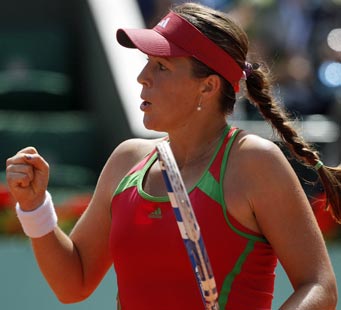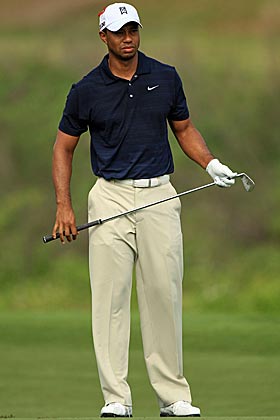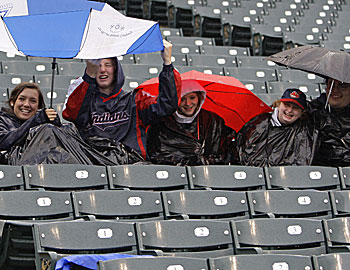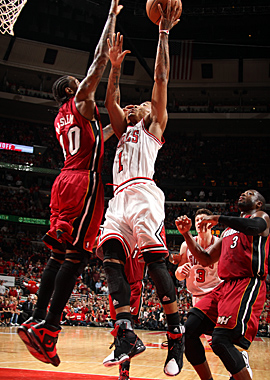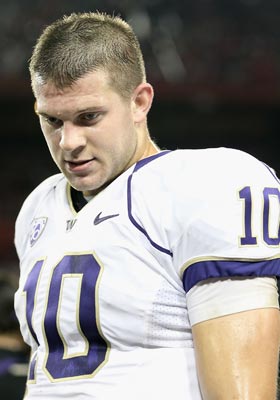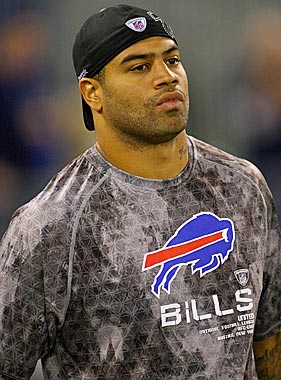Kennedy scored pinch-runner Luis Rodriguez with a bloop single off Rivera in the bottom of the 12th inning and the Seattle Mariners won for the ninth time in 10 games with a 5-4 victory over the New York Yankees on Saturday night.
It was the fifth game-winning hit in Kennedy's career and kept Seattle rolling on a night that ace Felix Hernandez was knocked around early and a misplayed fly ball by Ichiro Suzuki led to extra innings.
Yet, the Mariners found another way to win as Kennedy fought off Rivera's famed cutter and dropped it in front of Curtis Granderson in center field to set off a late-night celebration.
"In that situation Adam is such a good hitter and with Mariano out there you know what is coming," Seattle designated hitter Jack Cust said. "So when he bears down I'll take [Kennedy] with the game on the line anytime."
Kennedy had little success against Rivera in the past getting just one hit in 13 at-bats against the Yankees' closer.
Seattle handed Rivera (1-1) his first loss since Sept. 11, 2010 against Texas in appearance No. 1,001 for the Yankees star. The Mariners are now in second-place in the AL West and have surged back from being seven games under .500 less than two weeks ago.
Rivera's inning started as most do, getting a broken bat grounder from Chone Figgins, before Justin Smoak blooped a single to left that Brett Gardner barely missed on a diving attempt. Cust then came up with the big blow, going the other way with a backdoor cutter that Rivera left up and dropping a double just inside the left field line. Smoak raced to third with just one out.
"He was trying to backdoor the cutter. He likes to come in with it and once he comes in he likes to freeze you away which he's done to me before," Cust said.
Rivera thought it was a good pitch, but didn't make excuses afterward.
"I made good pitches and the ball found places," Rivera said. "You can't do anything about that. I wish we were still playing."
Miguel Olivo drove in three runs for the Mariners, including a two-run double in the fourth off Yankees' starter Ivan Nova. Brendan Ryan also had an RBI single.
The attraction on this night was the chance to see Seattle ace Felix Hernandez go for a fifth straight win against the Yankees. Last year, he was 3-0 and allowed just one earned run versus New York.
That total was matched in the second inning when Robinson Cano homered. Mark Teixeira gave New York a 3-1 lead with a two-run shot in the fourth after Hernandez failed to sneak a 2-0 fastball past the Yankees' slugger.
But Hernandez was still in line to get his sixth win of the season into the seventh before Suzuki's mistake. Derek Jeter walked on a 3-2 pitch with two outs and Granderson eventually worked a 3-2 count as well, then hit a fastball to deep right field.
Suzuki raced back to the warning track and jumped at the wall, but misjudged the depth of Granderson's hit and didn't need to jump. Suzuki whiffed and the ball bounded back into the field, Jeter scored and Granderson raced around to third.
It stayed tied into the 12th, even though both teams had chances in the late inning and in extras.
Seattle went to closer Brandon League to begin the 10th and he started with groundouts by Granderson and Teixeira, before giving up consecutive singles by Alex Rodriguez and Cano to put runners at the corners with two outs. Russell Martin drove a 2-1 pitch to right-center field, but Suzuki was able to run it down to end the threat.
Nick Swisher singled with one out in the 11th off reliever David Pauley (4-0) who got the win for the second straight night. Swisher was replaced by pinch-runner Chris Dickerson and advanced to second when Brett Gardner hit a liner back to the mound that Pauley knocked down and threw to first in time.
Jeter then stepped in but hit a weak grounder to short to end the inning.
"It's been fun," Pauley said of Seattle's recent run. "It's been a lot of fun."
Notes
- Four different fans, including a streaker, ran on the field in the late innings. All were tackled by security and removed from the stadium.
- Former Mariners Edgar Martinez and John Olerud were honored as inductees to the Washington state sports hall of fame during a pregame ceremony.
- New York's game against Minnesota that was rained out on April 6 will be made up on Monday, Sept. 19 at Yankee Stadium.
distribution without the express written consent of STATS LLC and The
Associated Press is strictly prohibited.




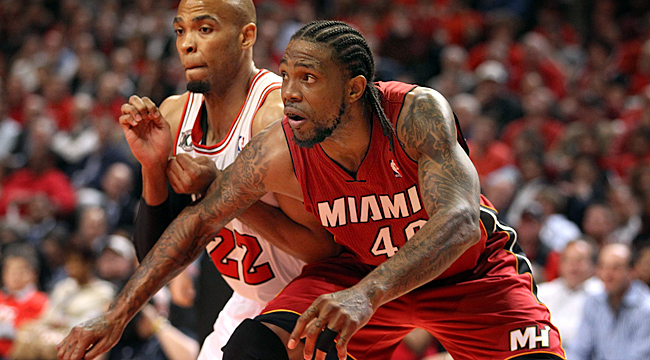



 10:02 a.m.
10:02 a.m.
